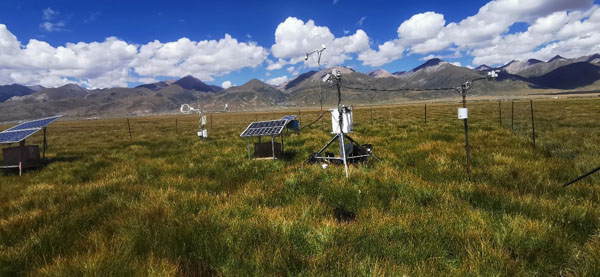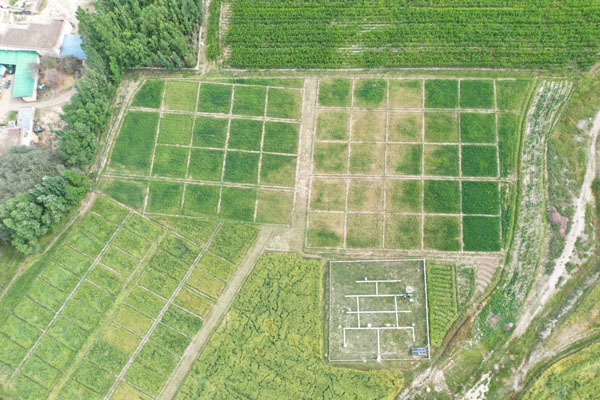National Observation and Research Station of Lhasa Agro-ecosystem
National Observation and Research Station of Lhasa Agro-ecosystem (Lhasa Station) is situated at Dagze county, with approximately 3755 m above sea level, Tibet Autonomous Region. Lhasa Station was established in 1993 by Commission for Integrated Survey of Natural Resources (after 2000 is Institute of Geographic Sciences and Natural Resources Research), Chinese Academy of Sciences, for fulfillment of fixed experiment of scientific questions met in the past scientific investigations and providing technological support for local agro-pastoral development. Since 2003 it was authorized as one member of Chinese Ecosystem Research Network (CERN). In 2005, It was ratified as China National Field Scientific Observation and Research Stations (CNERN).
Lhasa Station focused on Tibetan Plateau ecosystem research based on long-term observation, experiment and field investigation, aiming to keep pace with international scientific frontiers and national vital demands, develop and promote the optimal modes of sustainable agro-pastoral management on the Tibetan Plateau. Major research topics included (1) exploring typical ecosystem structure and function on the Tibetan Plateau and their responses to global change, (2) developing key technologies and sustainable management for restoring degraded plateau ecosystem, (3) research and demonstrating key techniques for plantation, processing and animal husbandry in agricultural and agriculture-pasture combination areas.
Lhasa Station had three field bases and one research center on the Tibetan Plateau, which included farmland ecosystem in Dagze, Artificial pasture ecosystem in Lhünzhub, and alpine grassland ecosystem in Damxung. One research center is the Tibetan Plateau Pratacultural Engineering Technology Research Center. Based on these observation and experimental field bases, Lhasa Station established three grassland transects, two CO2/H2O flux towers, and one warming, precipitation increasing and N addition experiments, which covered the alpine meadow, wetland and farmland ecosystem on the Tibetan plateau. One scientific experiment base and three demonstration bases on agro-pastoral ecosystem also were developed.
Lhasa Station had 15 academic staffs, including 4 Professors, 9 associated professors and technicians and 3 assistant researchers. More than 20 M.D. and Ph.D. students studied in the Lhasa Station, and thousand local farmers were trained by the Lhasa Station. The Lhasa Station has become an important talent education base in and out of CAS.
In recently years, Lhasa Station has been funded more than 60 items of projects by National Key Project for Basic Research on the Tibetan Plateau, China Natural Science Foundation, Chinese Academy of Sciences, Scientific and Technology Department of Tibet Autonomous Region, and some international cooperation organizations. Lhasa Station has published 237 papers, of which 135 papers were published by the international SCI journal, including the top scientific journal Science Advance. 6 awards of science and technology were received by the Lhasa Station, of which three were the first prizes awarded by Tibet autonomous region.
Based on the field platforms and research projects, Lhasa Station not only cooperated with more than 10 domestic research institutions and universities for networking researches, but developed long-term and closely research cooperation with many foreign university and institutes in the ICIMOD, United States, Swizterland, Germany, Japan etc. Lhasa Station also was the science practical bases for students from many university, middle and primary school.

Figure1 Agricultural landscape in the Lhasa river valley

Figure2 CO2 flux tower in alpine meadow, Damxung

Figure3 CO2 flux tower in alpine wetland, Damxung

Figure3 CO2 flux tower in alpine wetland, Damxung